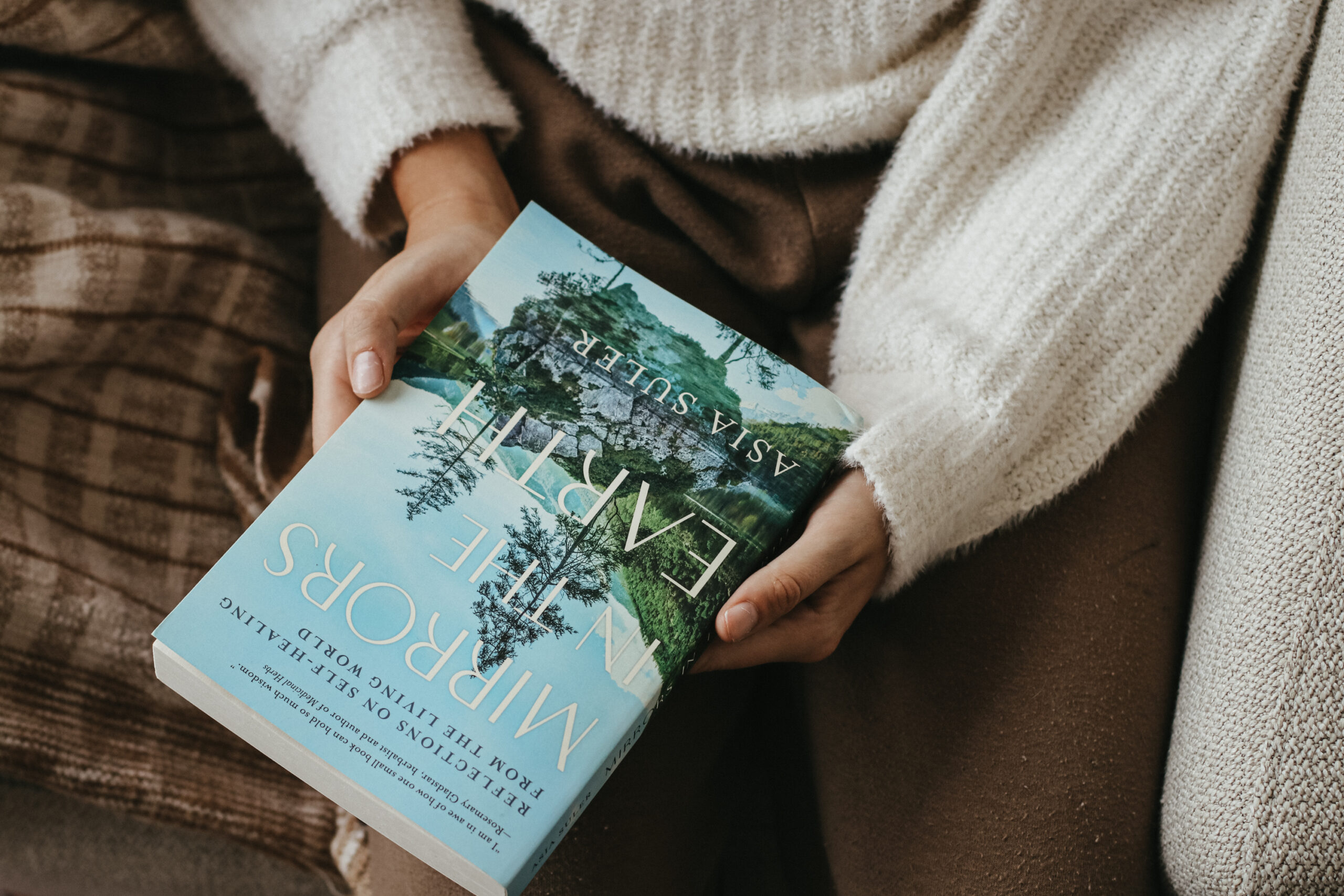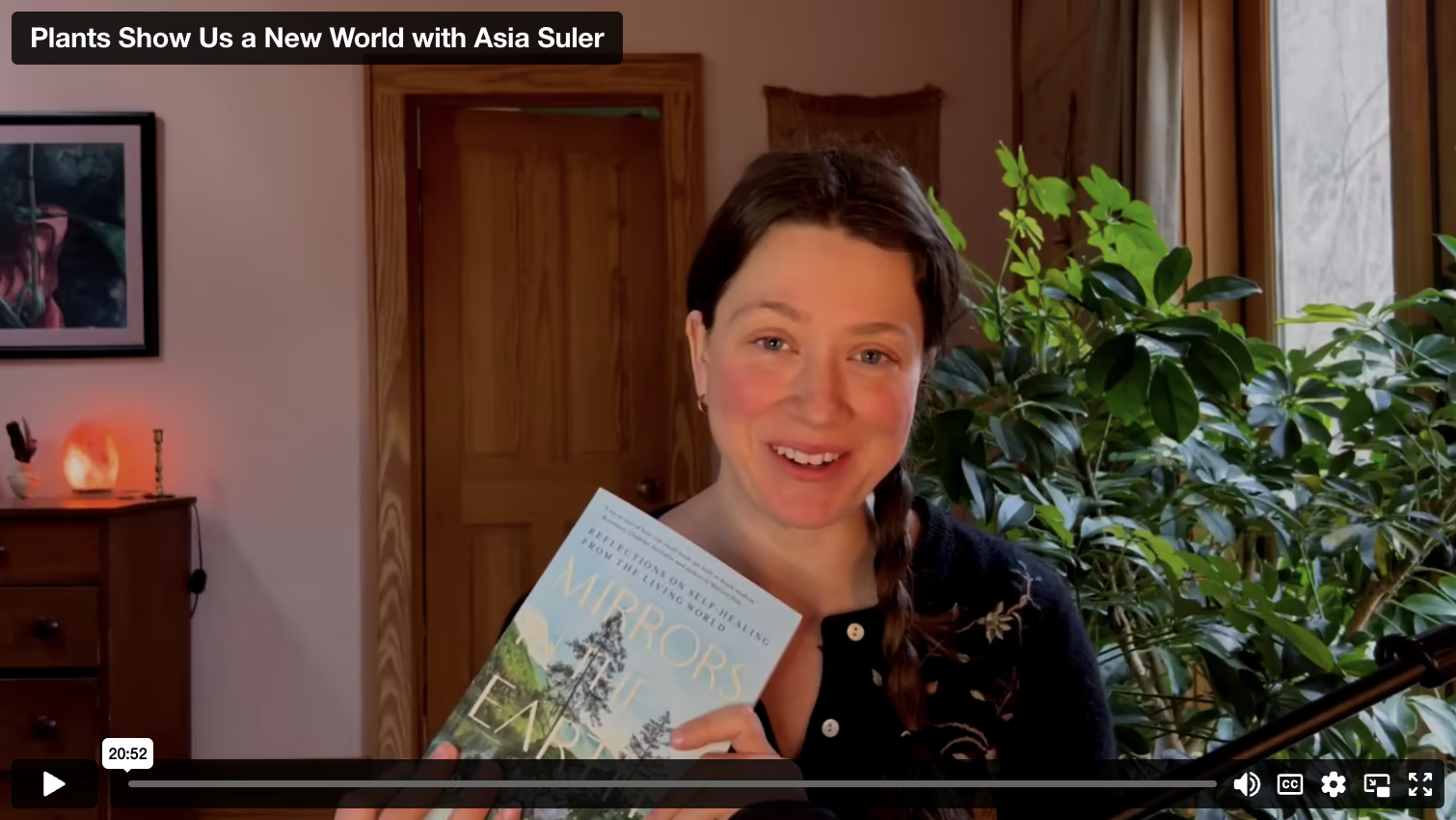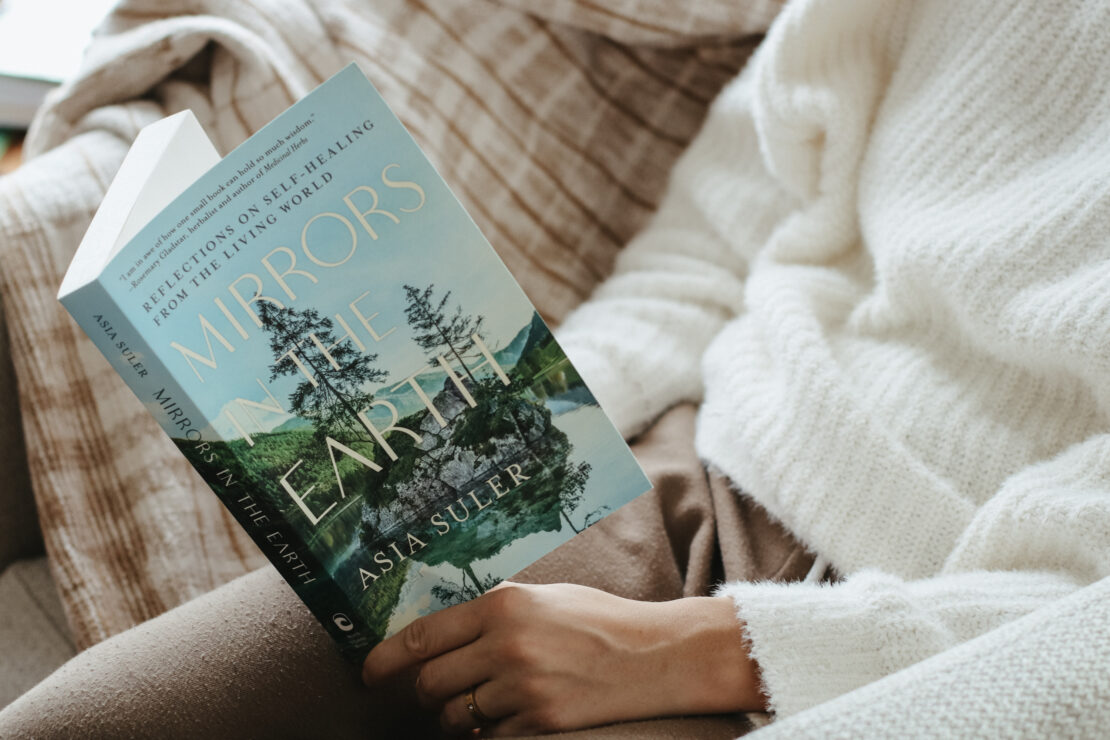
Dissolving the Green Wall: Learning to Connect With Plants and Our Environment
The following book excerpt titled “The Green Wall” is taken from Mirrors in the Earth by Asia Suler and is used with permission. For over a decade, Asia Suler has worked one on one with people in her private practice and with numerous students as a teacher, guiding them on a journey of learning, healing, and connecting with nature. In this excerpt, Asia shows us that by simply connecting with plants we dissolve “the green wall” and change our perception of our environment and ourselves.
THE GREEN WALL
Seeing is something we take for granted, and yet we do not each experience it the same. We see based on what we’ve learned to see. Inside our brains are neurons called sensory gateways. Depending on what we’ve been taught is important to pay attention to, we will selectively let in certain sensory experiences and gate, or block, others. This is why a child on a farm might be able to point out twenty different plants in the world around them, while a kid raised in the city might only see one or two distinguishable plants. It is not that this latter child can’t learn them but that they literally haven’t been taught to see them.
There’s a video that goes around on the internet from time-to-time showing a team of teenagers, in black and white shirts, passing a basketball to each other. Based on the research of Daniel Simons and Christopher Chabris, the video starts by asking the viewer to count how many passes the team members in white make. At the end, they let you know how many occurred so you can test your counting. Then they ask, with a jokester-like nod, “ . . . but did you see the gorilla?”(1) Watching the video rewind before your eyes, you see what had been totally invisible to you before. While you were counting passes, a person in a gorilla costume walked right into the middle of the screen, thumped on their chest, and then exited out the other side. You never saw it, of course, because you were too focused on counting each pass. In so many ways, this is how we interact with the world around us today. We are taught to count things like monetary value or the number of likes we get on a post, which means we miss the rich reality of what is really going on around us. But there is a whole world, invisible to us, that comes alive when we learn how to look.
Depending on how we were raised, most of us grew up without ever being taught to see the natural world. The late, and legendary, herbalist Frank Cook called this hazy, nondescript view of nature the green wall. From a young age many of us inherited the implicit cultural belief that nature is simply not as important as the human world. Before we learn to pick out the denizens of the green world, to know their shape and call them by name, it is literally as if we cannot see them.
I still remember the first time the green wall dissolved before my eyes. I was in college and had stumbled across the website of Steve Brill, an ecologist and wild foods gatherer who lived in New York City. Because I was going to school in the Hudson valley, just a short train ride away from the Big Apple, I read through his website and deduced that similar plants were growing on our campus. Using his guides, I identified my first plant—jewelweed. On campus that fall, the jewelweed was just transitioning from its tangelo-colored, trumpet-shaped flowers to seed pods that, upon touch, would spring open in a burst. I still remember the moment I realized that a particular footbridge I had crossed every day for the past few years was lined with jewelweed . . . and its edible seeds! It was as if my eyes suddenly grew new cones. All along I had been surrounded by these warm-hearted characters who had waved to me, day-in and day-out, but only now could I see them. I rerouted my path to class just to cross this bridge, letting the seeds spring into my hands so I could eat half and scatter the other half into the rich soil of the creek-bed. I was often lonely in college. Dealing with chronic pain, I spent a lot of afternoons wandering by myself in the woods. Looking back at this moment, however, I realized I was never alone. I had been with jewelweed. I saw these plants, and, wonder of all wonders, I realized that all along they had been seeing me.
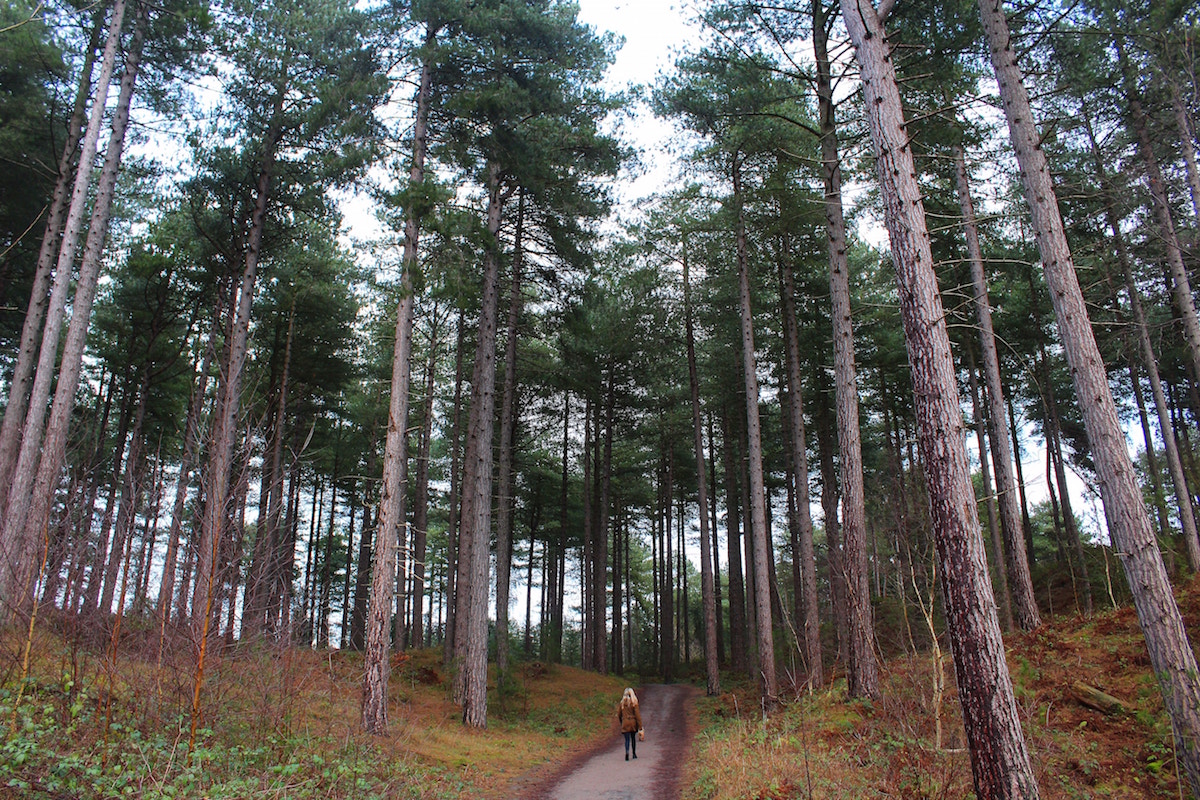
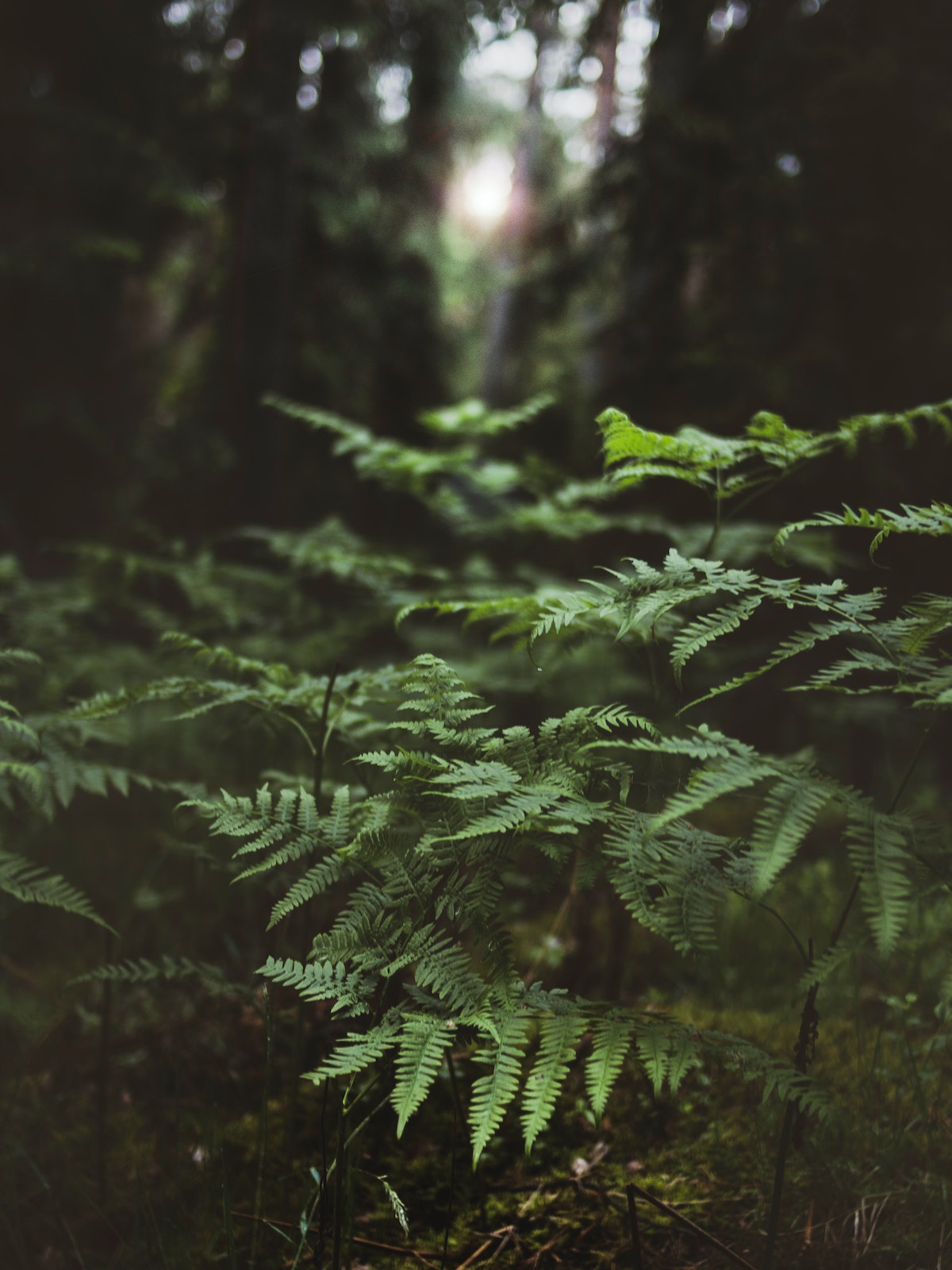
So often we go about our human-centric life thinking that we are invisible, irredeemable, or simply alone—meanwhile the living world recognizes us as a part of the whole. We walk into nature and assume that what we are hearing is the ongoing hubbub of a world that doesn’t notice us, yet the Earth is continually responding to our presence. Whether it is the bird call that announces our steps in the forest, the squirrel that is watching us to see whether we might leave a scrap of sandwich behind, or the seeds of the jewelweed springing out like rain the moment we brush past them—no matter how invisible we think we are, we are seen. No matter how low we feel, we’re always being held by the world around us.
In Indigenous cultures, this understanding, that the Earth is constantly watching over us like a mother observes her children, is nothing new—it is a knowing as native and elemental as a baby’s instinct to meet their parents’ gaze. A friend of mine once made a pilgrimage with a group to Peru to study with a Paqo, a traditional medicine person of the Andes. She told me later that on their first outing, the group spent hours waiting at the foot of a mountain before they were able to ascend. According to their Andean guide, the mountain needed, first, to see them.
For those of us who weren’t raised in a culture that is in intimate relationship with the living world, the realization that the whole of the Earth is responding to our presence with perpetual recognition and nonjudgement tends to cause a cascade of deep feeling. Science is still an infant in terms of recognizing the larger reality of this interconnection, but even in this most empirical of fields, the acknowledgment of communication and exchange between humans and nature, is growing. For example, while it makes sense that animals might be reacting to us, new studies show that plants not only feel when they are being touched by humans, but respond to the subtleties of how we touch them. (2) We have insulated ourselves so entirely from the world around us that we have forgotten the entire world feels our touch. When we come home to this realization, we open our hearts to the deeply touching reality that we have always belonged.
Whether or not we realize it, so many of us feel alone on this planet. We point to social media or our globalized economy, but the loneliness we feel goes so much deeper. Disconnected from the wider family with whom we share this planet—the goldfinches and pines, the creek newts and the gentle bovines—the part of us that is the Earth feels orphaned. We don’t need any kind of elaborate ritual to belong. We don’t need to do anything special in order to be seen. All we have to do is open our own eyes, and we will recognize that we never left home.
SEE THE VIDEO IN THE HERBARIUM!
Members of The Herbarium can join Asia in a video as she shares her spirited enthusiasm for the living world and engages us to reflect on our own plant journeys! You’ll find this engaging Plants Show Us A Whole New World video in The Herbarium.
Interested but not yet a member of The Herbarium? Get access today with a 3 day trial for only $3!
The Herbarium is our ever-expanding, illuminating virtual collection of over 200 (and counting!) searchable monographs, unique intensive short courses on focused topics, and numerous articles, videos, ebooks, podcasts, and helpful downloadable resources. The Herbarium is crafted to help you learn and grow in your herbal journey!
Learn more and sign up for The Herbarium here.
Get a copy of Asia’s book, Mirrors in the Earth, via her website here or on Amazon.
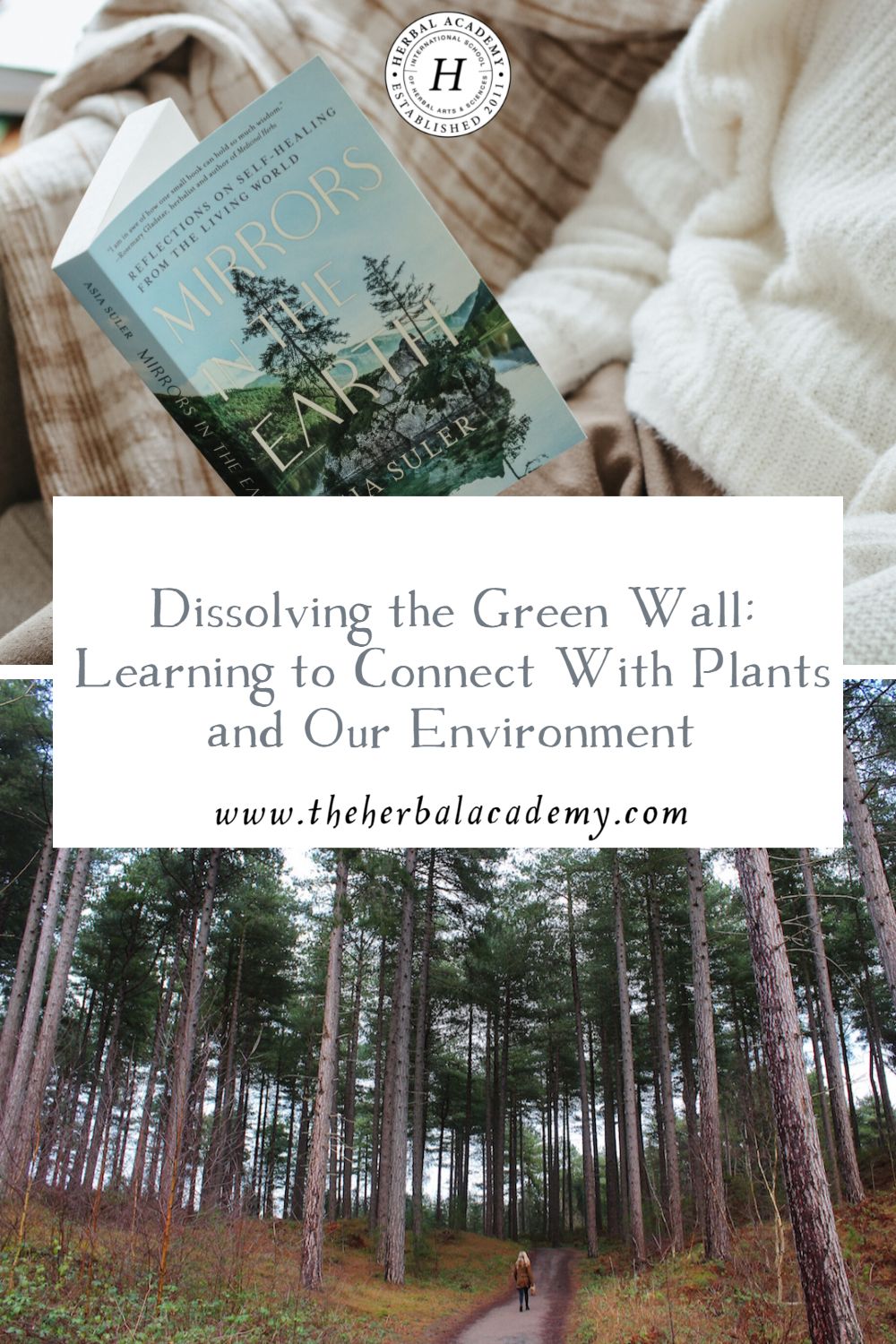
REFERENCES
(1) Christopher Chabris, and Daniel Simons. “The Invisible Gorilla.” The Invisible Gorilla: And Other Ways Our Intuitions Deceive Us, 2010, http://www.theinvisiblegorilla.com/gorilla_experiment.html.
(2) “Plants Are ‘in Touch’ with the World around Them.” The University of Western Australia, May 25, 2016, https://www.news.uwa.edu.au/201605258690/international/plants-are-touch-world-around-them.

